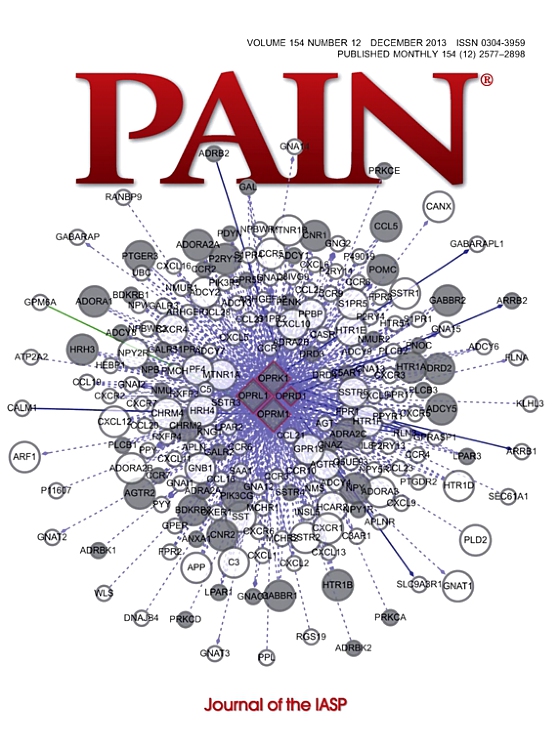Diagnostic accuracy of quantitative sensory testing for detecting small fiber impairment in polyneuropathy and diagnosing small fiber neuropathy.
IF 5.9
1区 医学
Q1 ANESTHESIOLOGY
引用次数: 0
Abstract
This cross-sectional retrospective study evaluated the diagnostic accuracy of cold detection thresholds (CDT) and warm detection thresholds (WDT), measured by quantitative sensory testing, for detecting small fiber impairment in polyneuropathy and diagnosing small fiber neuropathy (SFN). A total of 384 individuals with distally distributed sensory disturbances were included. Using ACTTION criteria, 138 patients with polyneuropathy were identified. Among them, 36 were diagnosed with SFN, 91 with mixed fiber polyneuropathy, and 11 with pure large fiber polyneuropathy. First, we assessed CDT and WDT accuracy, both individually and combined (ie, an abnormal value in either CDT or WDT), in detecting small fiber impairment in polyneuropathy. Next, we calculated CDT and WDT diagnostic accuracy for SFN, both alone and combined, and evaluated their accuracy when integrated with small fiber-related clinical abnormalities. Isolated abnormalities in CDT or WDT showed relatively low diagnostic accuracy. However, combined abnormalities achieved a sensitivity of 69% and specificity of 70% for detecting small fiber impairment in distal symmetric polyneuropathy. For SFN diagnosis, combining CDT and WDT yielded 78% sensitivity, 70% specificity, and a 94% negative predictive value. These metrics improved to 78% sensitivity and 100% specificity when CDT or WDT were integrated with small-fiber-related clinical abnormalities. Although individual CDT and WDT assessments offer limited diagnostic accuracy, their combination provides a practical, noninvasive approach for screening small fiber impairment in distal symmetric polyneuropathy and diagnosing SFN. This strategy may reduce the need for more invasive and less cost-effective procedures, like skin biopsy.定量感觉试验检测多发神经病小纤维损伤及诊断小纤维神经病的诊断准确性。
本横断面回顾性研究评估了冷检测阈值(CDT)和热检测阈值(WDT)的诊断准确性,通过定量感觉测试测量,用于检测多发神经病变的小纤维损伤和诊断小纤维神经病变(SFN)。共纳入384例远端分布感觉障碍患者。采用act标准,138例多发性神经病变患者被确诊。其中36例为SFN, 91例为混合性纤维多神经病变,11例为单纯大纤维多神经病变。首先,我们评估了CDT和WDT的准确性,无论是单独的还是联合的(即CDT或WDT中的异常值),以检测多发性神经病的小纤维损伤。接下来,我们计算了CDT和WDT单独和联合诊断SFN的准确性,并评估了它们与小纤维相关临床异常的准确性。单独的CDT或WDT异常诊断准确率相对较低。然而,在远端对称多神经病变中,联合异常检测小纤维损伤的灵敏度为69%,特异性为70%。对于SFN的诊断,CDT和WDT联合诊断的敏感性为78%,特异性为70%,阴性预测值为94%。当CDT或WDT与小纤维相关的临床异常相结合时,这些指标的灵敏度提高到78%,特异性提高到100%。尽管单独的CDT和WDT评估的诊断准确性有限,但它们的结合为筛选远端对称多神经病变的小纤维损伤和诊断SFN提供了实用的、无创的方法。这种策略可能会减少对更具侵入性和成本效益较低的手术的需求,如皮肤活检。
本文章由计算机程序翻译,如有差异,请以英文原文为准。
求助全文
约1分钟内获得全文
求助全文
来源期刊

PAIN®
医学-临床神经学
CiteScore
12.50
自引率
8.10%
发文量
242
审稿时长
9 months
期刊介绍:
PAIN® is the official publication of the International Association for the Study of Pain and publishes original research on the nature,mechanisms and treatment of pain.PAIN® provides a forum for the dissemination of research in the basic and clinical sciences of multidisciplinary interest.
 求助内容:
求助内容: 应助结果提醒方式:
应助结果提醒方式:


